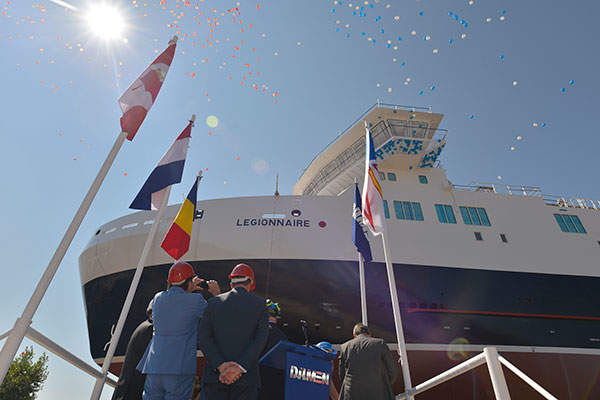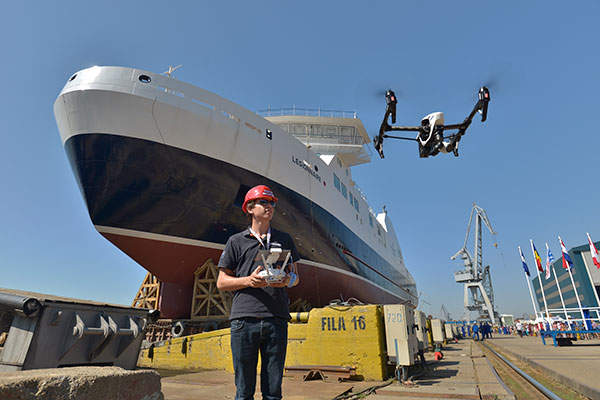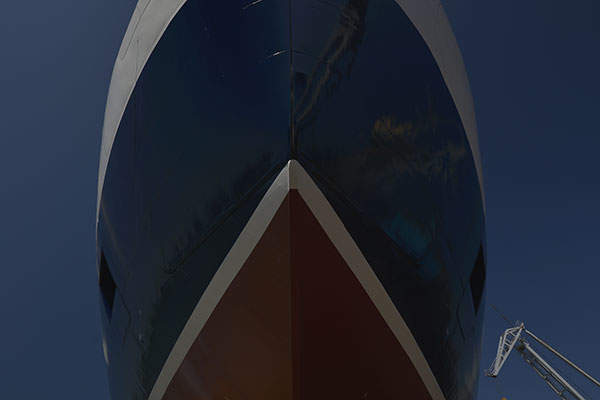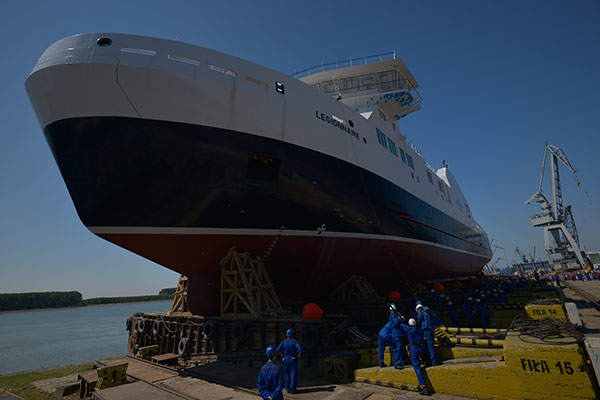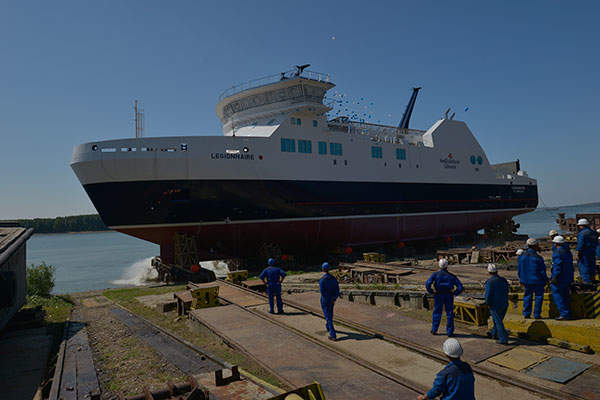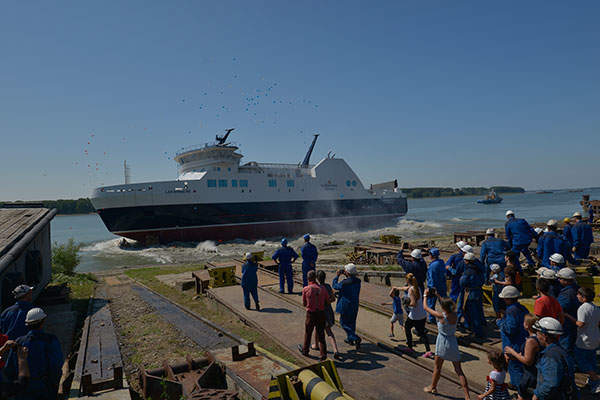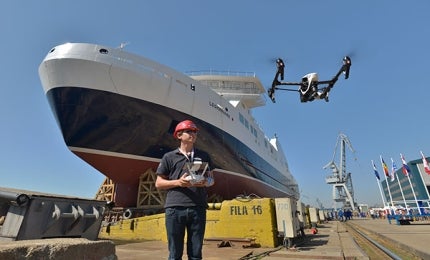
MV Legionnaire is the second of the two Ro-Pax ferries built by Damen Shipyards Group for the government of Newfoundland and Labrador Province, Canada. The launch and naming ceremony of the vessel was held at Damen Shipyards Galati in Romania, in July 2015. The first of the two vessels, MV Veteran, was launched in April 2015.
MV Legionnaire is named in honour of the Newfoundlanders and Labradorians that served the nation during the past wars and global conflicts. The observation deck and the two passenger lounges are also named after four notable Bell Islanders to honour their contributions.
In December 2013, Damen Shipyards Group received a contract from the provincial government for a second state-of-the-art, 80m Ice Class ferry to serve the route from Newfoundland to Fogo Islands and Change Islands.
The two similar ferries are part of the vessel replacement programme initiated by the provincial government to replace the old ferries and expand the capacity on the route.
MV Legionnaire is specially designed for operating in thick ice conditions and will be deployed in the short-haul route between Portugal Cove-St Philip’s and Bell Island, the busiest route of the province. It will be delivered to the province in February 2016.
MV Legionnaire Ro-Pax ferry design
MV Legionnaire was designed by Canadian engineering firm Knud E Hansen in association with Danish firm Fleetway. The scope of the work included concept, tender and basic design.
MV Legionnaire is classified as ABS +A, vehicle passenger ferry, Ice class 1AA, Near Coastal Voyage Class II, E, +AMS, HAB+, NIBS, ENVIRO and GP.
The ICFs are a series of three identical dual fuel car-passenger ferries being built by Remontowa Shipbuilding for BC Ferries.
The steel-hulled vessel has an overall length of 80.9m, moulded breadth of 17.2m and a draught of 4m. The length between perpendiculars is 71m and depth to the upper deck is 6.5m. The ferry has a deadweight tonnage of 905t.
Ro-Pax transport capacity of the vessel
The vessel can transport 200 passengers, ten crew members and 70 vehicles. It can accommodate 50 cars on the main deck, whose lane length is 275m. The main deck has a trailer lane length of 190m and can accommodate six trailers. The hoistable car deck, with a car lane length of 75m, accommodates up to 14 cars.
Tank capacities of MV Legionnaire
The Ro-Pax ferry has the tank capacity to store 160m³ of fuel oil, 8m³ of lube oil, 34m³ of freshwater, 36m³ of sewage and 1,250m³ of ballast water.
Communication and navigation equipment
The nautical and communication equipment in the wheelhouse are installed according to the requirements of national authorities and the owner.
The equipment includes S-band and X-band radars, electronic chart display and information system (ECDIS), autopilot, echo sounder, speed log, GPS navigator, gyro compass, magnetic compass, public address system, CCTV, Navtex, automatic identification system (AIS), long-range identification and tracking (LRIT) system, VHF, UHF, GDMSS 2 and infotainment system.
Accommodation aboard the ferry
The ferry offers 130 seats in forward passenger lounge, 85in aft passenger lounge and three toilets, including two in passenger lounges and one for disabled personnel. Two elevators are provided, one for passengers and the other for services from Decks 3 and 5.
Crew accommodation includes 15 single-crew cabins with toilet, a mess room and a day room. Catering facilities include a galley with provision for serving area.
Propulsion system
The diesel-electric propulsion system integrates three Caterpillar 3512C C main engines, two 1,600kW Rolls-Royce electrically driven azimuth thrusters, and two 2,600mm ice-strength, fixed-pitch propellers. The propulsion system enables the vessel to sail at a service speed of 14k.

